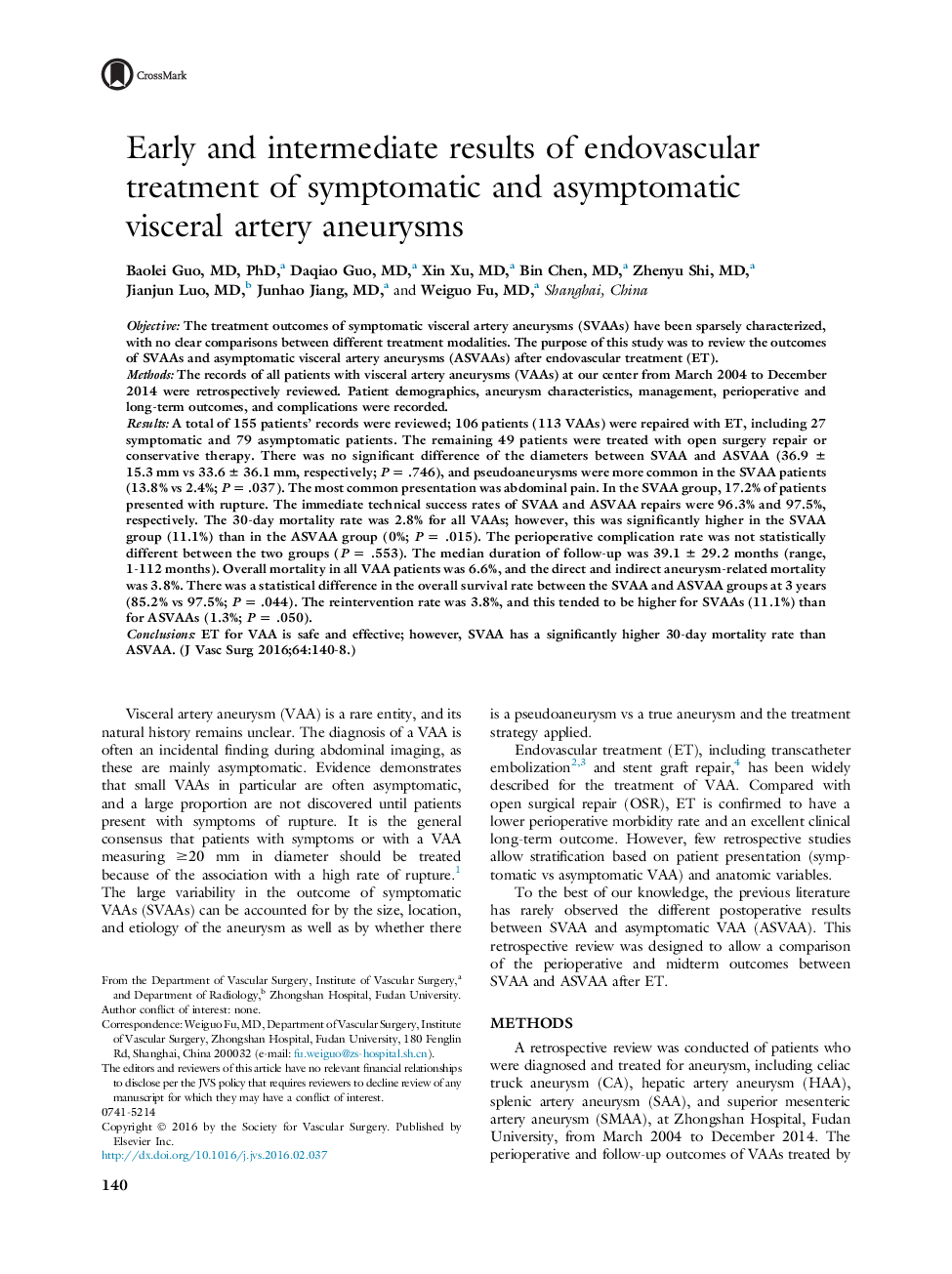| کد مقاله | کد نشریه | سال انتشار | مقاله انگلیسی | نسخه تمام متن |
|---|---|---|---|---|
| 2987589 | 1179805 | 2016 | 9 صفحه PDF | دانلود رایگان |
ObjectiveThe treatment outcomes of symptomatic visceral artery aneurysms (SVAAs) have been sparsely characterized, with no clear comparisons between different treatment modalities. The purpose of this study was to review the outcomes of SVAAs and asymptomatic visceral artery aneurysms (ASVAAs) after endovascular treatment (ET).MethodsThe records of all patients with visceral artery aneurysms (VAAs) at our center from March 2004 to December 2014 were retrospectively reviewed. Patient demographics, aneurysm characteristics, management, perioperative and long-term outcomes, and complications were recorded.ResultsA total of 155 patients' records were reviewed; 106 patients (113 VAAs) were repaired with ET, including 27 symptomatic and 79 asymptomatic patients. The remaining 49 patients were treated with open surgery repair or conservative therapy. There was no significant difference of the diameters between SVAA and ASVAA (36.9 ± 15.3 mm vs 33.6 ± 36.1 mm, respectively; P = .746), and pseudoaneurysms were more common in the SVAA patients (13.8% vs 2.4%; P = .037). The most common presentation was abdominal pain. In the SVAA group, 17.2% of patients presented with rupture. The immediate technical success rates of SVAA and ASVAA repairs were 96.3% and 97.5%, respectively. The 30-day mortality rate was 2.8% for all VAAs; however, this was significantly higher in the SVAA group (11.1%) than in the ASVAA group (0%; P = .015). The perioperative complication rate was not statistically different between the two groups (P = .553). The median duration of follow-up was 39.1 ± 29.2 months (range, 1-112 months). Overall mortality in all VAA patients was 6.6%, and the direct and indirect aneurysm-related mortality was 3.8%. There was a statistical difference in the overall survival rate between the SVAA and ASVAA groups at 3 years (85.2% vs 97.5%; P = .044). The reintervention rate was 3.8%, and this tended to be higher for SVAAs (11.1%) than for ASVAAs (1.3%; P = .050).ConclusionsET for VAA is safe and effective; however, SVAA has a significantly higher 30-day mortality rate than ASVAA.
Journal: Journal of Vascular Surgery - Volume 64, Issue 1, July 2016, Pages 140–148
